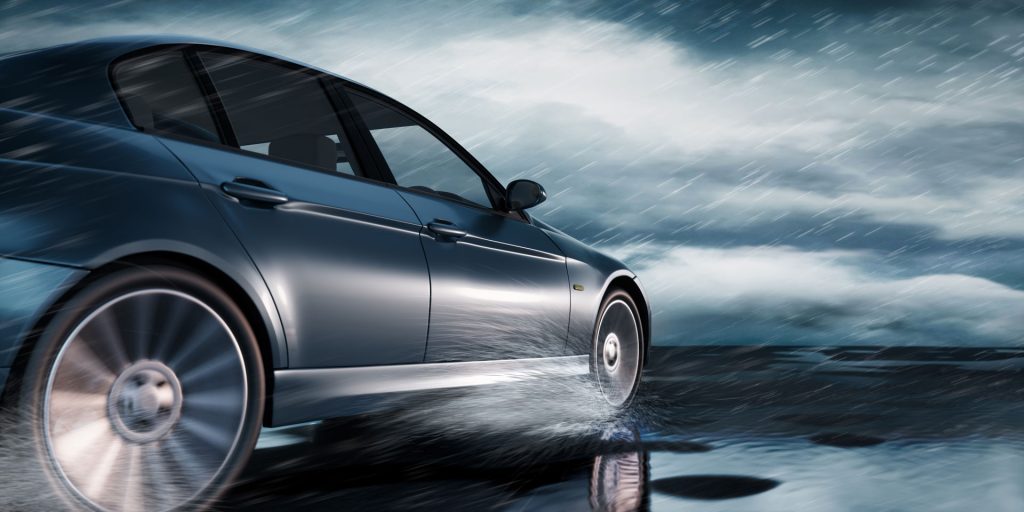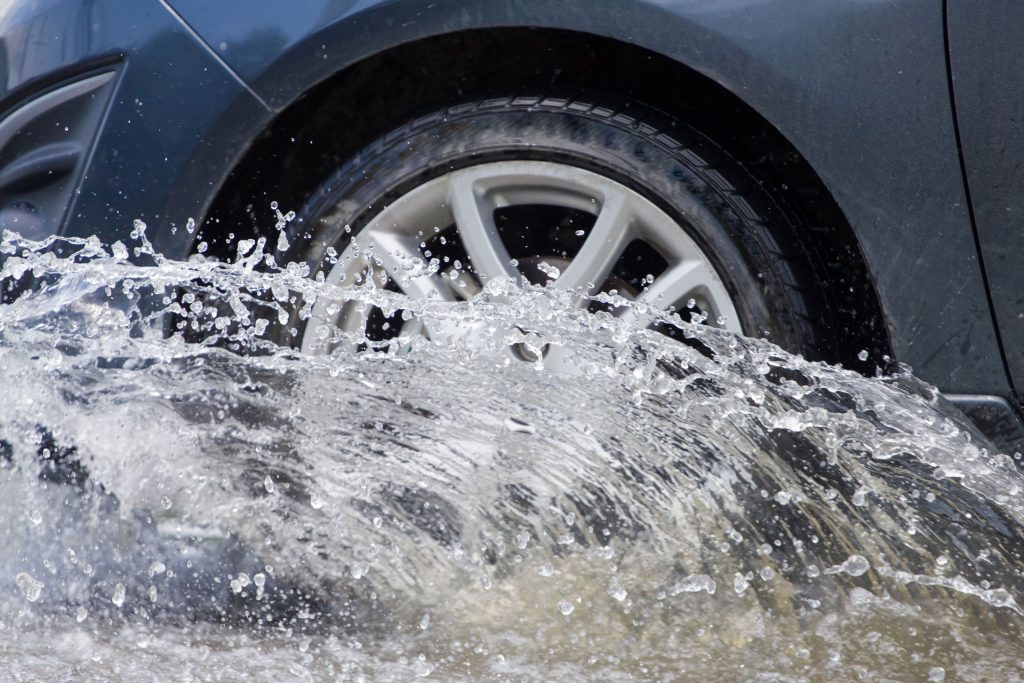Hydroplaning
On slippery roads, drivers can lose control of their vehicles in just moments. People may think of skidding mainly in terms of ice, but water can be equally dangerous. Hydroplaning can be extremely dangerous for everyone on the road, and it is important for drivers to know how to deal with the situation if it happens. With the proper knowledge and techniques, drivers can help to reduce the dangers of hydroplaning and make the roads safer.

Whenever it rains, water lands on the roads and sits on the surface until it evaporates. A small amount of water is unlikely to make much of a difference, but larger amounts can create a layer of water between the surface of the road and a vehicle’s wheels. This can cause the vehicle to hydroplane, or to ride along the surface of the water rather than making contact with the road itself.
How Hydroplaning Happens
Hydroplaning can happen whenever the road is covered with even a very thin layer of water. As Nick Kurczewski notes in his Carfax article on hydroplaning, this situation is quite common in both normal rainfall and in storms. When too much water comes between the surface of the road and a set of tires, the vehicle might begin to swerve from side to side or begin to spin around. Both of these situations can be very dangerous.
Although hydroplaning can happen at any point when the roads are wet, it is most common at the beginning of a rainfall because of the liquids that are already on the surface. As vehicles drive along the road, liquids such as antifreeze and oil tend to leak onto the surface. When rain falls, these liquids then mix with the water, creating a slick surface that can cause vehicles to lose their grip on the road itself.
Although these oils and other liquids wash away quickly, especially in heavy rain, they can cause significant problems in the first minutes of a rainfall and sometimes even longer, depending on the amount of water. When road surfaces are uneven enough to cause small pools of water and other liquids to form, driving can become even more dangerous.
How to Prevent Hydroplaning
According to the Safe Motorist website, drivers can help avoid hydroplaning, or at least minimize its effects, in several ways. Properly inflating the tires and rotating or replacing the as necessary can help to keep them in the best possible condition for difficult road conditions. Although it is impossible to predict when the rain will come, drivers can be prepared for that possibility.
Driving carefully and avoiding problem areas can also help. The Safe Motorist website recommends driving more slowly than usual, avoiding puddles such as the ones that form at the sides of the road, and trying to follow the tracks left by other vehicles can help. Turning off the cruise control is important for giving the driver as much control over the vehicle as possible.

Whenever the weather turns wet, drivers should be able to respond as quickly as possible to whatever situations they encounter. Turning off the cruise control is one way of giving a bit more control to the person behind the wheel. Driving in a lower gear in manual transmission vehicles can also help. Just as with icy conditions, drivers should avoid sudden braking or sharp and quick turns.
Recovering from Hydroplaning
Despite their best efforts, drivers may be unable to avoid hydroplaning. In that case, as Nick Kurczewski explains in his Carfax article, drivers can take a number of actions to get the vehicle under control again. The first step is to stay calm, although this may be easier in theory than in practice. When a vehicle begins to slide, especially in heavy traffic, it can be easy for drivers to panic. However, knowing the techniques for avoiding an accident can help them to prepare in advance for the troubles that can come from operating a vehicle under these circumstances.
The first instinct for many drivers when losing control of their vehicles may be to use the brakes to slow down. However, this could cause the vehicle to spin out of control. A better method is to release the accelerator and allow the vehicle to slow down gradually. In many cases, this will be enough for the driver to get the vehicle under control once again, and it will be possible to resume normal driving. If it is necessary to use the brakes, a gentle pressure will help slow the vehicle down while still allowing the driver to control its movements.
In some cases, the amount of water on the road or other factors may cause the vehicle to start spinning. Although most drivers will instinctively attempt to steer in the direction away from the spin, the better option is to steer in the same direction as the spin. Throughout the process, these movements of the steering wheel should be smooth and slow to help the driver maintain control of the vehicle.
Skiing on Water
As the Ministry of Transportation of Ontario website notes, hydroplaning is like skiing on water, which makes control difficult while also potentially causing problems for other drivers. When a vehicle drives in wet conditions, the tires displace the water, often spraying it on the windshields of other vehicles. With their view of the road obscured by water, drivers may be unable to see obstructions around them and could easily crash.
Driving carefully in wet conditions is important. Besides the possibility of crashing due to hydroplaning on the water or causing another driver to crash, drivers may be unable to see potholes hidden under the water and may cause serious damage to their vehicles, and water in the engine can cause the vehicle to stall. Vehicles might also splash pedestrians or cyclists at the side of the road and cause them great discomfort, if not worse.
Hydroplaning is highly dependent on the weather and the terrain. However, all drivers should know how to deal with this potentially dangerous situation. Knowing the right methods for dealing with hydroplaning will help make the roads safer for everyone.
